If you have always dreamed of feeling the weightless sensation of flying, then you may have fun with aerial yoga. Most people report a feeling of excitement and bliss at the end of a class. The use of a suspended hammock or silk is bringing together beautiful yoga poses with helpful suspensions that have been associated with the easing of spinal decompression.
Introduction
Aerial Yoga is a somewhat new approach to an age-old physical discipline. Parts of the Aerial Yoga core movements come from other physical activities such as gymnastics, dance, ballet, even as far back as the traveling performers in the Orient practicing these same moves (albeit not always in silk) with just a rope. There are also roots taken from Pilates, calisthenics, and circus art in the practice of aerial yoga.
Aerial yoga, as a newer form of fitness, has quickly grown in popularity. Developed a little over 10 years ago by a man named Christopher Harrison was initially considered a fad. The use of a suspended hammock or silk brought beautiful yoga poses together with helpful suspensions that have been testified to help with spinal decompression, increasing mobility, and naturally realigning your muscles and joints.
What To Know Before Beginning Aerial Yoga
Defy gravity while becoming more connected to the Earth. Aerial Yoga harnesses the power of the ultimate yoga props — the aerial hammock. It can make advanced yoga poses accessible to beginners and the most basic poses a challenging exploration for advanced practitioners.
Aerial Yoga combines traditional mat yoga with postures suspended in soft fabric hammocks. With the help of gravity and the hammocks, we can playfully explore floating, fluid movements and create space in our bodies without compressing our joints and spine. With practice, the feeling in the body is exquisite. The silky hammocks are a special high-density nylon that can hold over 2000 pounds each.
Aerial Yoga is a wonderful complement to your mat practice. It unwinds fascial knots and tangles, quiets the mind, builds core-strength, and leaves your body feeling integrated. The basic yoga principles of ahimsa (non-harm) and mindfulness are woven throughout the sequences. The hammock, like other props in yoga, is intended to assist alignment and deepen your awareness. The fabric becomes a learning tool and students often find “Aha!” moments that bring new life and understanding to poses they previously feared or fought to achieve. In aerial yoga classes, they will alternate between practicing with the hammock and practicing on the mat to play with gravity in different ways and to stay energetically grounded.
About Aerial Yoga
Aerial yoga is a combination of two different kinds of yoga, Hatha and Vinyasa, performed while on an aerial hammock. Vanatta said the use of the hammock has several benefits, including decompression of the spine, strengthening the core and upper body, releasing tension and increasing flexibility. Aerial yoga can be an easier alternative for the elderly or injured.
Students start low to the ground and move up higher while learning more about climbing, poses, and swings. The exercise builds core and upper body strength along with balance.

What are Aerial Yoga’s benefits?
• Improves flexibility: Yoga poses to stretch and lengthen your muscles while increasing the range of motion in your joints. A tight neck can strain your shoulders through your elbows, creating stiffness in your fingers. Inflexibility in your hamstrings can lead to flattening of the lumbar spine. Tight hips can strain the knee joint.
• Contributes to bone remodeling: Your skeleton is continuously breaking down and renewing itself. The rate at which bone remodeling occurs is affected by how much calcium is stored in the bones (supplied by diet) as well as three components; vitamin D, hormones, and exercise. Weight-bearing yoga exercises such as plank and the downward dog will help ward off osteoporosis.
• Corrects posture: Creating balance in the body and working on the weakened areas of the back, pelvis, and shoulders will create the balance and core strength needed for correct posture.
• Increases blood circulation: Yoga postures such as twists, warrior II, reverse warrior, and legs-in-air will help increase circulation in the spine, glands, and organs. The circulatory system pumps blood throughout the body, delivering oxygen and carrying away waste products.
• Lowers blood sugar: Alternation between abdominal contractions and extensions, like Cat-Cow, stimulates the pancreas, increasing blood and oxygen supply. As a result, the pancreatic cells are rejuvenated by nutrients and fresh blood flow, improving the organ’s ability to produce insulin. Yoga also lowers bad cholesterol and boosts good cholesterol.
• Reduces stress: Yoga taps into your parasympathetic nervous system, also known as your ‘rest and digest system.’ When your body controls the vagus nerve through a five-minute breathing technique, cortisol is reduced, blood pressure drops, and you breathe at a slower rate.
• Improves balance: Increases proprioception ‘ the ability to feel what your body is doing and where it is in a space. Also, strengthens your core/abdominal muscles.
• Sleep more soundly and deeply: At least eight hours are needed to give the body the energy to restore its natural rhythm, improve decision making, boost the immune system and aid in digestion.
• Weight loss: Depending on the difficulty of your practice or the class attended, yoga has the benefit of burning three to six calories each minute. If you eat too much, no amount of exercise will keep you lean, but setting precise intentions will help you reach for a banana instead of a cookie.
7 Reasons You Should Consider Aerial Yoga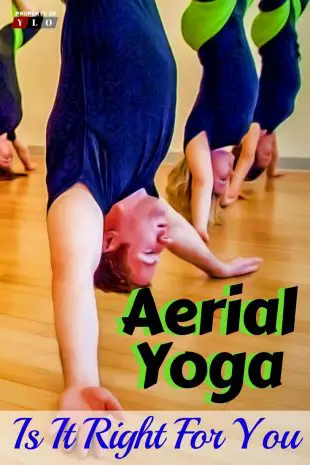
1. Aerial yoga is great for spinal decompression.
By relying on the fabric, which is called a hammock, your body uses less effort to support yourself. Being suspended allows your spine to elongate and lengthen using the weight of your body. Let go, sink into a pose, and open up.
Try Chair Pose with your arms strapped in the looped hammock. Sit with your hips back, feet on the ground and let the spine elongate!
2. Inversions are a piece of cake.
Ahh, inversions, love them or hate them, they are extremely beneficial for circulation, calming anxiety, and increasing blood flow to the brain for improved mood and emotion.
Incorporating inversions into your asana while on the earth can be challenging. With Aerial yoga, students are firmly secured in the hammock, you can invert your body and hang from the sky, making handstands much more doable.
With little to no effort, your fears of holding your body upside down disappear as the fabric does the work for you.
3. It strengthens your upper body.
Certain yoga practices focus heavily on core and leg strength, but if you’re looking to work your upper body, Aerial yoga can help since you use your arms and shoulders to hold yourself suspended. It is common in yoga to move by pushing off the earth, but in Aerial yoga, you pull from the sky.
A pose such as a Low Lunge can be done with your arms in a wrist wrap with the fabric. Hold your arms directly in front of you for stability in the Low Lunge. Hoisting yourself into the air using the hammock can quickly improve your arm and chest muscles.
4. You feel like a beautiful, elegant Acrobat.
We’ve all had dreams of running away with the circus, right? Aerial yoga classes can combine gymnastics, yoga, and circus arts, depending on the fusion of the class. Much of aerial also incorporates movement and motion into the poses, creating an elegant flow much like a dance or performance.
Even if you are new to gymnastics, a lot of the elements are similar to yoga. Even gentle swaying using the fabric deepens your stretches and creates a motion akin to dance.
5. It’ll introduce you to new ways to do poses you already do like a pro.
Sure, we may all have mastered Plank or Bridge, but imagine doing those poses with your ankles in the hammock. It adds a new challenge to a familiar pose while improving core strength.
It’s always fun to feel like a beginner again, and Aerial yoga gives you the opportunity to experiment with your practice by adding new twists to old favorites.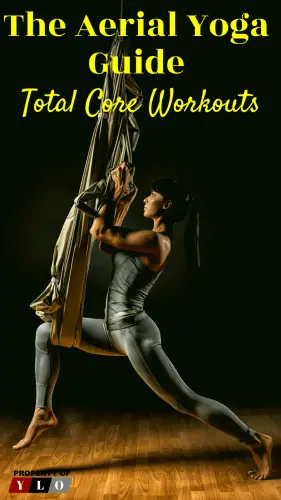
6. Savasana feels like you’re in a cocoon.
Savasana in Aerial yoga is suspended, meaning you are in a cocoon of fabric! The feeling of weightlessness promotes a different sensation than resting on the earth. Being in a protected shell feels amazing, especially while gently swaying in motion.
7. It improves your overall well-being by creating a braver, more confident you.
Entrusting the fabric with your weight can be scary at first. Many poses in Aerial yoga have you fully suspended. It’s natural to feel like you will fall, but you won’t! Gaining this sense of security is extremely beneficial both in your practice and in life.
It takes time to really trust the fabric, but eventually, you will, and it will give you a boost of confidence. It may feel out of your comfort zone, but hey, that’s where growth happens, right? After you’ve defied gravity, you can pretty much do anything.
Aerial Yoga Safety: The Pros and Cons
Pros:
1. Suspension in the hammock allows engaging in postures without compressing the spine or putting pressure on joints.
2. According to Mr. Harrison, you will leave the class stretched to your fullest height, which could be up to a 1′ inch non-cumulative increase. This could be a positive for those who wish they were taller.
3. Many have expressed remarkable results with healing chronic back pain.
4. It is very effective in building core strength.
5. It makes inversions easier for some. Inversions create a rush of blood to the head, which is good for the thyroid and pituitary gland.
6. You will feel a sensation of lightness, flying, and fun.
Cons:
1. The list of contraindications is long. It is recommended to avoid aerial yoga if you suffer from heart disease, extremely high or low blood pressure, glaucoma or severe arthritis, to name a few.
2. Someone with a propensity towards dizziness may not feel comfortable hanging upside down.
3. Those with poor balance may feel unstable and be frightened of falling.
4. It is definitely not safe while pregnant or if recovering from surgery.
However, if you have always dreamed of feeling the weightless sensation of flying, then you may have fun with aerial yoga. Most people report a feeling of excitement and bliss at the end of class. Hammocks in beginner classes are only three inches above the floor, so the risk of injury from falling is minimal. As always, start slow and go at your own pace.
8 Core Movements of Aerial Yoga
Why This Should Be Your Next Exercise Class
Aerial Yoga is unlimited and can be designed around your needs both physical and mental. There are no set exercises patterns and you can have a program that is designed only for you. An example is a program that is set up while you may be pregnant. The silk will be lowered to the floor and opened wide for you during these times. This helps expectant mothers alleviate stress, pressure from their joints and a feeling of togetherness with others. Some classes are designed for help with joint pain or compression more than standard Aerial Yoga movements. Children’s classes are popular after all this much more fun than doing pushups, less joint stress and running and is thought of as fun, not as an exercise by them.
Aerial Yoga, as you can see from the information here, provides individuals with an exercise that is only limited by the mind. Sign up for a beginner class with a friend and experience the fun and new feelings together. Others in the class will be new as well and everyone will have a great time together.

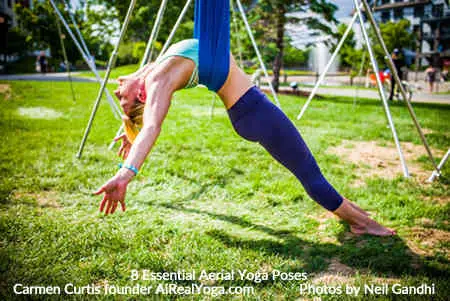
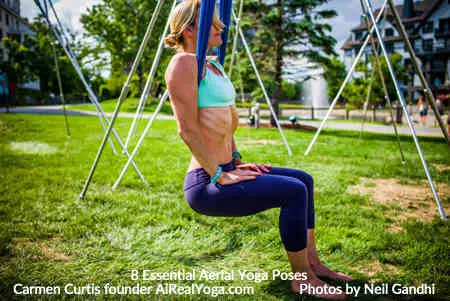
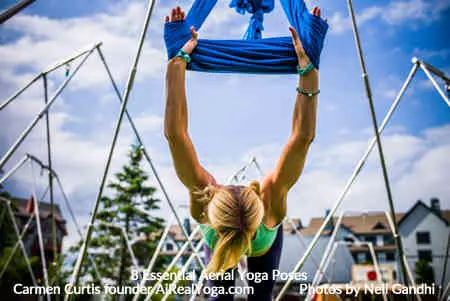
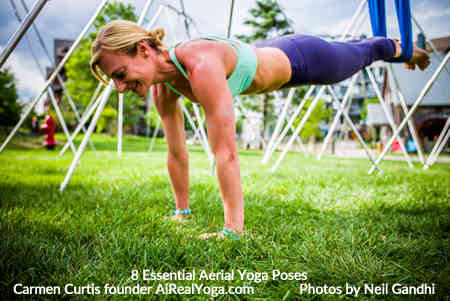
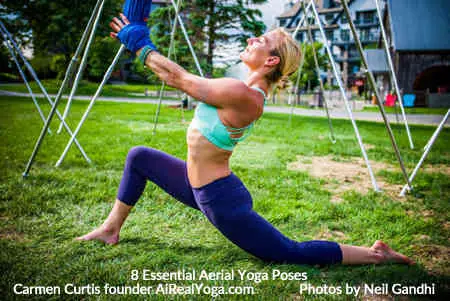
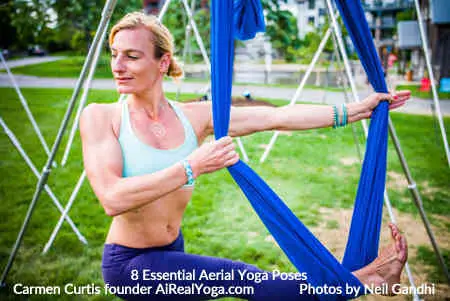
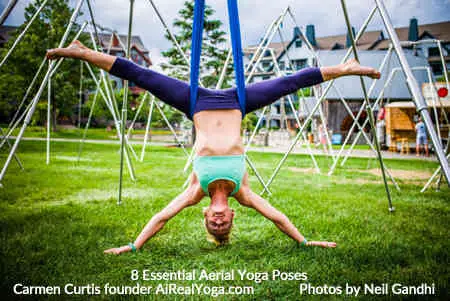
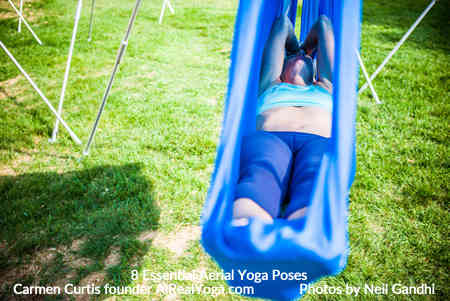
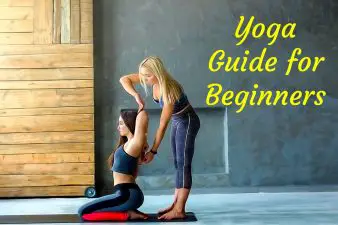
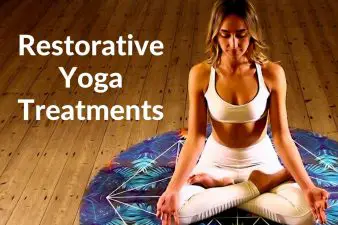
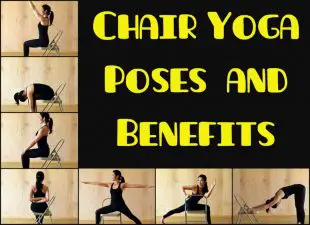
It is a ton of fun.
I would like to try this one day.
Try it if you at all get the opportunity. You will love it.
I would love to try this sometime, I have seen people do it before and it looks so fun and amazing! Great points!
You would be a natural.
Actually Aerial is more for older people, we are in our mid-60s, people recovering from injury and even children. Just because it says aerial does mean it must be high off of the floor, another much the same is chain yoga.
I do aerial silks but I would love to try aerial yoga unfortunately there isn’t any classes near me 🙁 will definitely keep a look out!
Thanks for sharing!
I have recently started yoga and loving it! I always thought that arial yoga was for the super advanced! I’ll have to check it out. Great post!
A great way if you are older like we are. So very easy.
Nowadays Yoga is an important part of my life. It’s essential for anyone. Thanks for the wonderful article.
One of my friends does Aerial Yoga and it looks amazing! I am yet to try Yoga in general and this has given me the boost to do so! thank you for sharing
This has the lowest impact of any yoga we have researched to date. It also looks like a lot of fun.
i like the benefits of this yoga, awesome post
We had a class today in the Republic of Georgia. I am sure you can find a class almost anywhere you are located.
Where are the classes located,